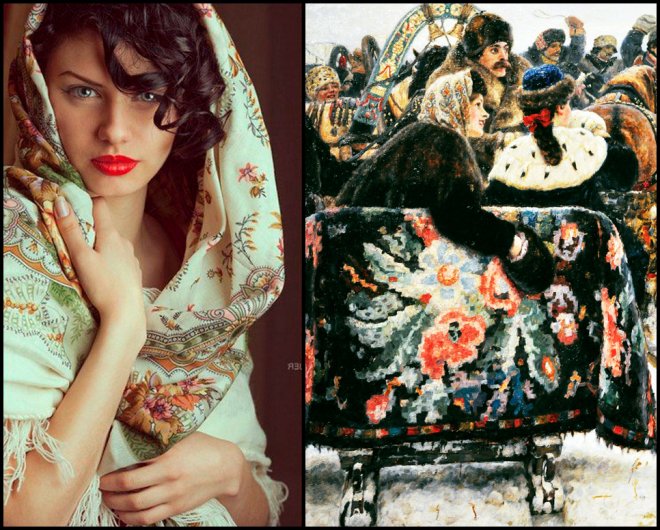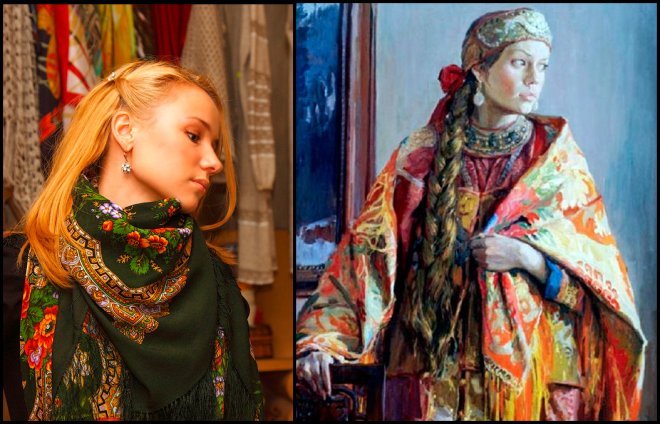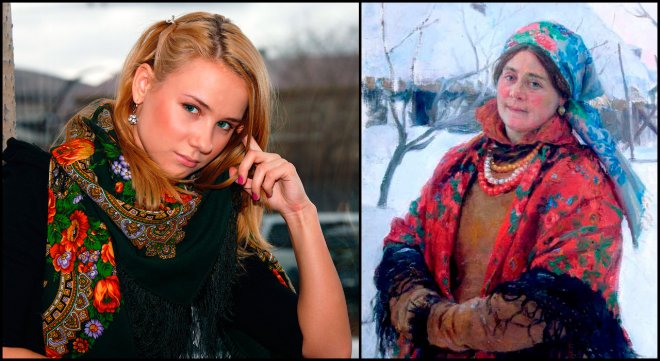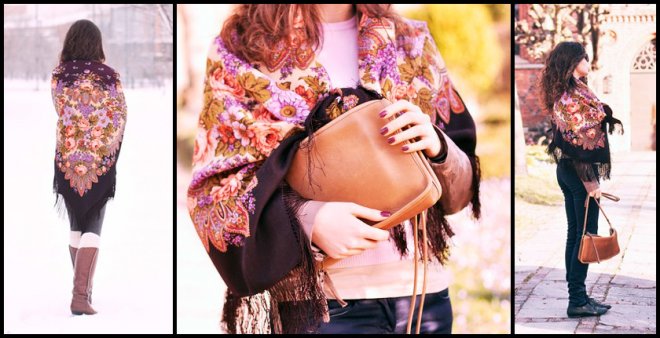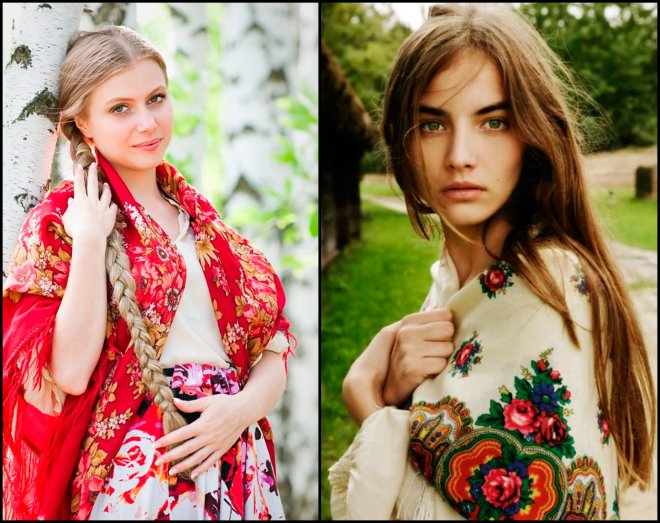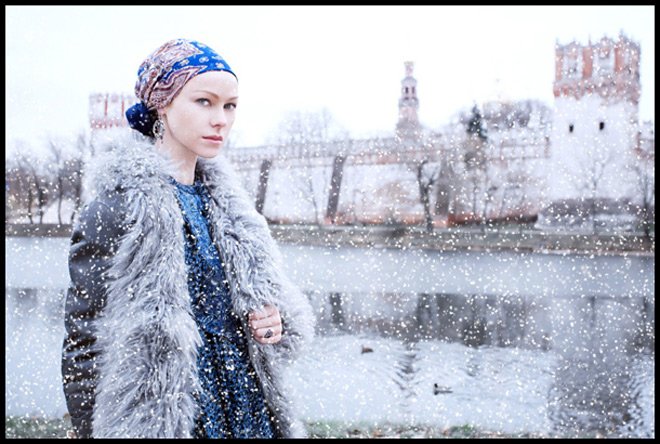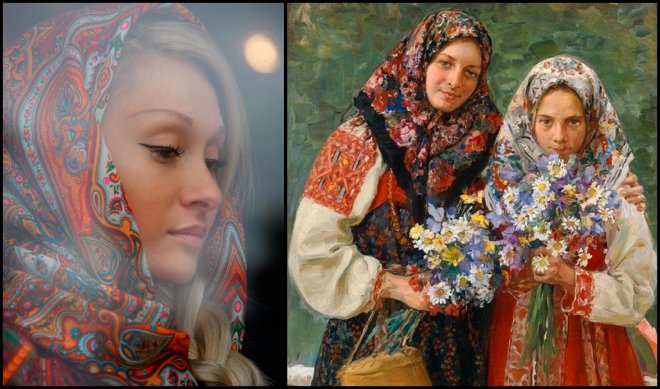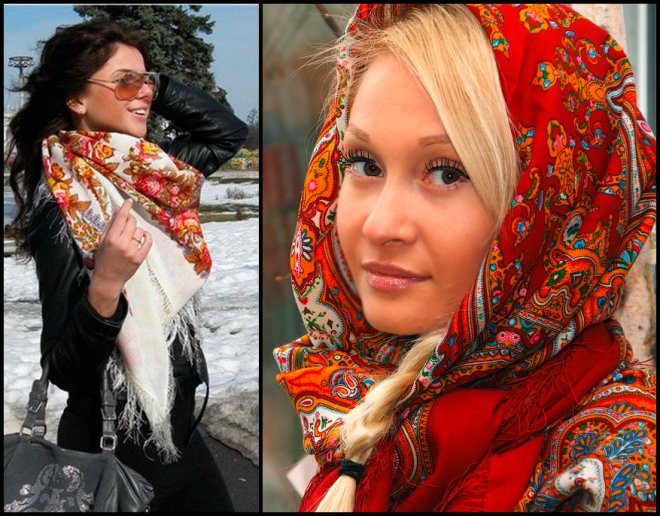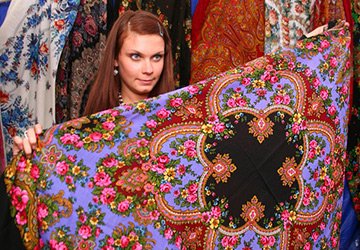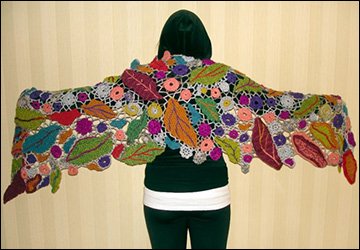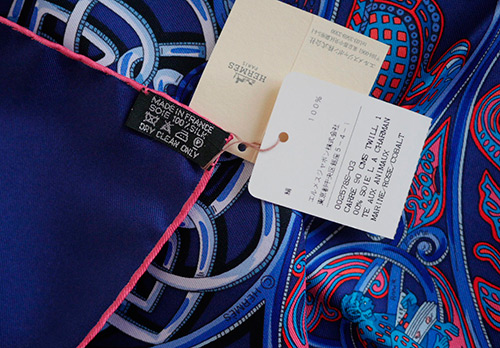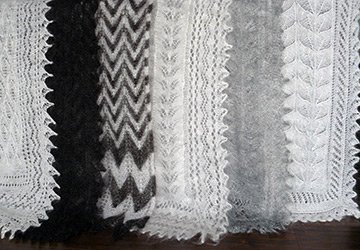Fashionable accessories
Russian shawls and scarves
Russian shawls. How often did they warm half-naked beauties in the 19th century, for whom it was easy to catch a cold in their transparent outfits, or they adorned the shoulders of ordinary peasant women and girls. Judging by the portraits of Russian artists V.L. Borovikovsky and I.P. Argunov, shawls on women's shoulders appeared in Russia in the 90s of the 18th century.
One of the trophies in 1799 the young Bonaparte brought out from the East exactly cashmere shawls. They were then quite expensive. Indian shawls were especially preferred by the ladies. But the Turkish ones were not inferior to them in beauty and price. Then came the English and French. When the ladies opened boxes with gifts brought to them from the East, the first thing they could smell was the smell of patchouli. What did it say? Of course - there was a shawl. And what does patchouli have to do with it, which soon began to be used in perfume? The fact is that the shawls were sprinkled with patchouli to protect them from moths. A little time has passed since Napoleon surprised the French ladies with a valuable gift ...
Russian shawls history
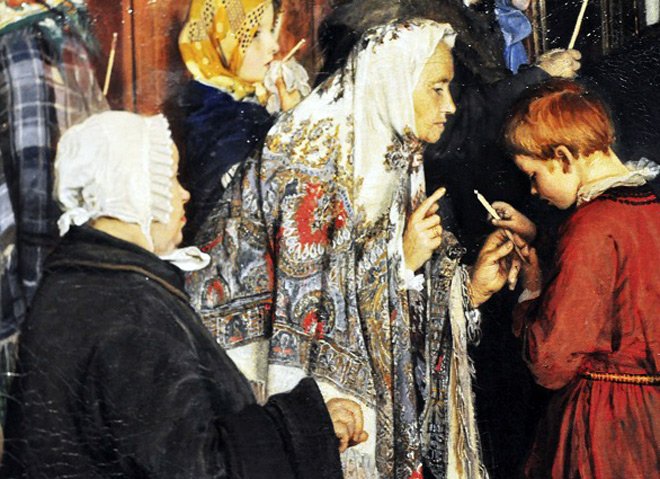
In 1806, the production of their own Russian shawls began in Russia. Russian Nizhny Novgorod landowner Nadezhda Merlina, then Saratov landowner D.A. Kolokoltsov, Voronezh landowner V.A. Eliseev - all of them started the production of shawls. At first, shawls in Russia were produced according to the principle of the eastern ones - Kashmir, Persian and Turkish. They were large in size from the wool of Tibetan goats. English and French shawls were also performed.
The ornament was all in the same oriental style - motifs in the form of arches, beans and other elements filled with small floral ornaments. All shawls - both eastern and western - had a front and a seamy side. The shawls produced in Russia were distinguished by their high perfection and were famous in the world market. It should be noted that in the workshops of Vera Andreevna Eliseeva, for the first time, the wool of Tibetan goats was replaced with the wool of saigas. According to reviews of that time from the "Journal of Manufactures and Trade" "... this fluff turned out to be so delicate, thin, soft that the yarn spun from it becomes like silk, and the shawls made from it are not only not inferior to ... Kashmiri, but also surpass their". There were 450 meters of thread in 13 grams of wool. Imagine how thin the yarn and the product were. But that is not all. Weaved on small looms containing not shuttles, but small needles, the number of which was as many as the shades in the product. And our Russian shawls did not have a front and a seamy side, they were the same on both sides. Tie it as you want. The color scheme was varied - bright, colorful, with a rich flora - there were roses, poppies, lilacs, phloxes.
... And in the light folds of a woman's shawl
The silence of the night blossomed. A. Blok
Thanks to the use of new technology, Russian shawls have become a luxurious addition to the dress of secular ladies. The art of wearing a shawl, draping into it and even dancing with a shawl was taught to girls in aristocratic families from an early age. In FM Dostoevsky's novel Crime and Punishment, Marmeladov says to Raskolnikov: “You must know that my wife was brought up in a noble provincial noble institute and, when she graduated, she danced with a shawl in the presence of the governor and other persons, for which she received a gold medal and a commendation list ".
The names of those craftswomen who worked in the workshops of the aforementioned landowners have not reached us, but their contemporaries highly appreciated the skills of these nameless women. Shawls were produced for a long time - from six months to 2.5 years and were very expensive. Serf craftswomen at the landowner V.A. Eliseeva worked up to 10 years, after which they received freedom with a small capital, and they were not needed, having worked for such a period of time, the workers lost their eyesight.
There are few such shawls preserved today, but if we look at the paintings of Russian painters, we can still imagine the beauty that Russian women craftswomen created.
... But remained in the folds of a crumpled shawl
the smell of honey from innocent hands. S. Yesenin

Such expensive shawls might not be available to many. Therefore, silk, woolen, cambric shawls, dyed in different colors, with a printed pattern have become more widespread. Gradually, shawls have evolved from luxury items to an integral part of the outfit. And everyone wore a shawl - from aristocrats to townspeople, merchants and peasant women.
Time passes, centuries change - fashion changes faster and faster, borrowing details and elements of past years. Therefore, even now, a Russian shawl will not be superfluous in your wardrobe. She is not influenced by time. This is a classic piece of women's wardrobe.
Comments and Reviews
Add a comment
Rating news
Shades of clothing that make women look younger
What shades of hair make women younger: rules and photos
Funny wedding dresses - photos and ideas
12 most expensive down jackets for the winter
How to look 25 at 40: tips from supermodels
Beautiful schoolgirls
Anti-aging haircuts and hairstyles for women
Fashionable skirts for autumn and winter
Fashionable women's trousers for the cold season
Fashionable and stylish sandals for summer 2024
Spring-summer 2024
 Fashionable dresses and tops with thin spaghetti straps
Fashionable dresses and tops with thin spaghetti straps
 Bandana tops: how to wear stylishly and beautifully
Bandana tops: how to wear stylishly and beautifully
 How to put together the perfect men's wardrobe for the summer
How to put together the perfect men's wardrobe for the summer
 Fashionable shorts for spring-summer 2024
Fashionable shorts for spring-summer 2024
 Fashionable skirts for spring-summer 2024: a guide to online shopping
Fashionable skirts for spring-summer 2024: a guide to online shopping
 The most fashionable dresses spring-summer 2024: styles and colors
The most fashionable dresses spring-summer 2024: styles and colors
 Fashionable total look 2024: ideas of images and trends
Fashionable total look 2024: ideas of images and trends

